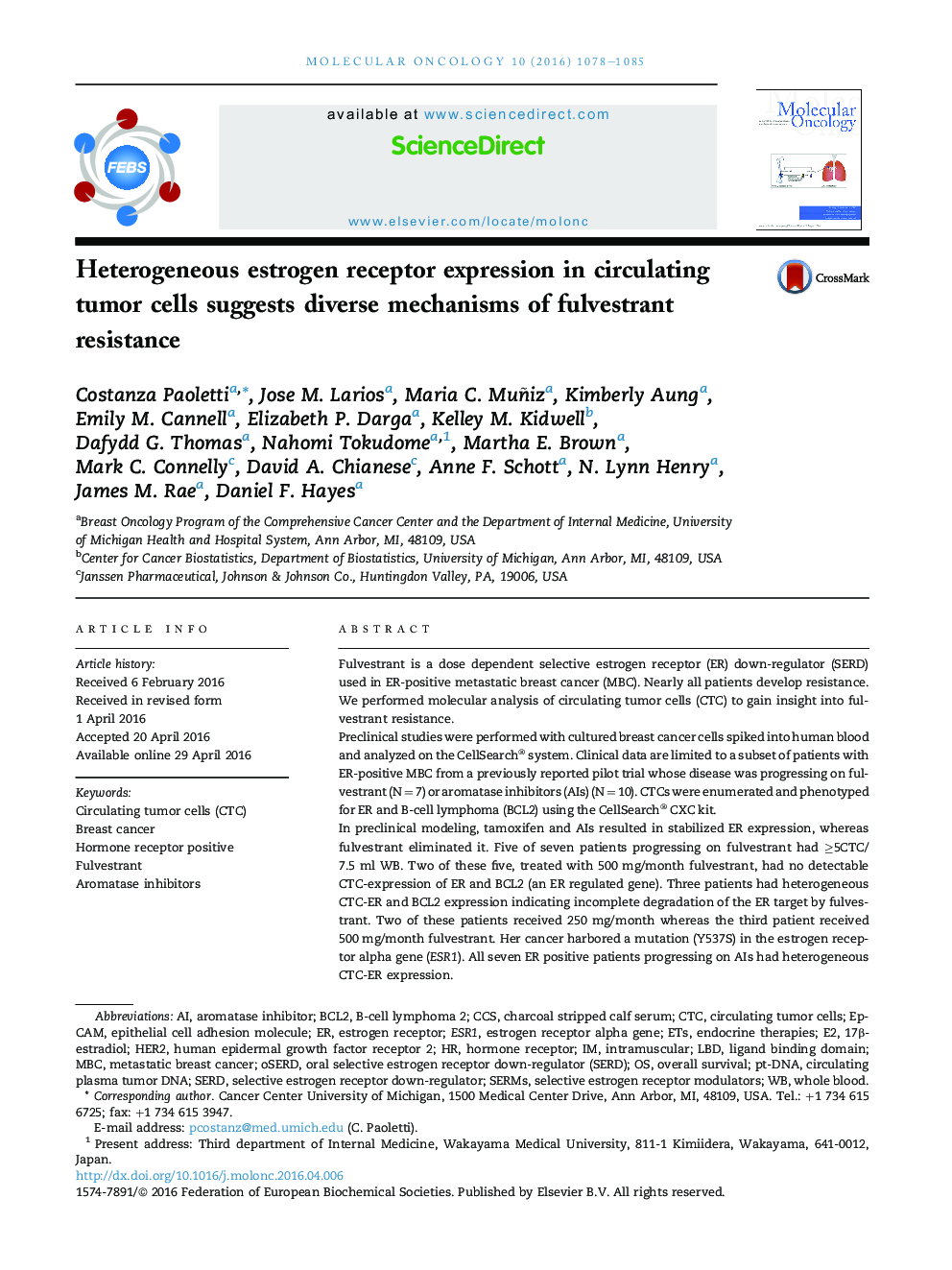| Article ID | Journal | Published Year | Pages | File Type |
|---|---|---|---|---|
| 5528605 | Molecular Oncology | 2016 | 8 Pages |
â¢Heterogeneous CTC-ER & BCL2 expression suggests diverse mechanisms of ET resistance.â¢CTC-ER expression may be a pharmacodynamic monitoring tool for SERD therapy.â¢Liquid biopsy may help to understand the bases of resistance to ET.â¢Serial liquid biopsies may provide further insight into drug resistance.
Fulvestrant is a dose dependent selective estrogen receptor (ER) down-regulator (SERD) used in ER-positive metastatic breast cancer (MBC). Nearly all patients develop resistance. We performed molecular analysis of circulating tumor cells (CTC) to gain insight into fulvestrant resistance.Preclinical studies were performed with cultured breast cancer cells spiked into human blood and analyzed on the CellSearch® system. Clinical data are limited to a subset of patients with ER-positive MBC from a previously reported pilot trial whose disease was progressing on fulvestrant (N = 7) or aromatase inhibitors (AIs) (N = 10). CTCs were enumerated and phenotyped for ER and B-cell lymphoma (BCL2) using the CellSearch® CXC kit.In preclinical modeling, tamoxifen and AIs resulted in stabilized ER expression, whereas fulvestrant eliminated it. Five of seven patients progressing on fulvestrant had â¥5CTC/7.5 ml WB. Two of these five, treated with 500 mg/month fulvestrant, had no detectable CTC-expression of ER and BCL2 (an ER regulated gene). Three patients had heterogeneous CTC-ER and BCL2 expression indicating incomplete degradation of the ER target by fulvestrant. Two of these patients received 250 mg/month whereas the third patient received 500 mg/month fulvestrant. Her cancer harbored a mutation (Y537S) in the estrogen receptor alpha gene (ESR1). All seven ER positive patients progressing on AIs had heterogeneous CTC-ER expression.These results suggest heterogeneous mechanisms of resistance to fulvestrant, including insufficient dosage, ESR1 mutation, or conversion to dependence on non-ER pathways. CTC enumeration, phenotyping, and genotyping might identify patients who would benefit from fulvestrant dose escalation versus switching to alternative therapies.
